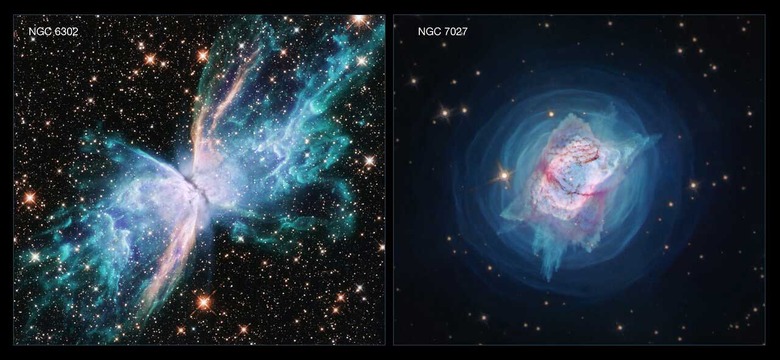Hubble shows off new images of planetary nebulae
The NASA/ESA Hubble Space Telescope has taken some of the most iconic images of space that we have. Hubble has shown off its imaging capabilities with two new images of planetary nebulae. The images depict two nearby young planetary nebulae known as NGC 6302 and NGC 7027. The former is also known as the Butterfly Nebula.
Both are among the dustiest planetary nebulae known to exist and contain unusually large masses of gas. Scientists studying these two nebulae have found unprecedented levels of complexity and rapid changes as bubbles and jets of gas blast off the stars at the center of each nebula. Hubble is attempting to help scientists understand the mechanisms underlying the chaos seen in the two images.

Both nebulae have been imaged by Hubble before, but the images were taken many years ago, and they were never imaged with the Wide Field Camera 3 instrument across its full wavelength range. That instrument makes observations in near-ultraviolet to near-infrared light. The resulting images provide the most comprehensive view to date of both of the nebulae.
Researchers say that the images show in vivid detail how both are tearing themselves apart on "extremely short timescales." Astronomers were able to see changes over the past couple of decades. The images are helping researchers trace the histories of the shockwaves inside the nebulae. Scientists believe that the heart of each nebula were two stars orbiting around each other.
The bizarre shape of each nebula suggests a pair of stars in a binary system. In such a system, the stars orbit one another closely enough that they eventually interact, producing a cast disc around one or both stars. That disk then launches jets that inflate polar-directed lobes of outflowing gas. Scientists have been unable to observe the suspected companion stars in these nebulae. Researchers believe that this may be because the companions are next to or have already been swallowed by larger and brighter red giant stars.
